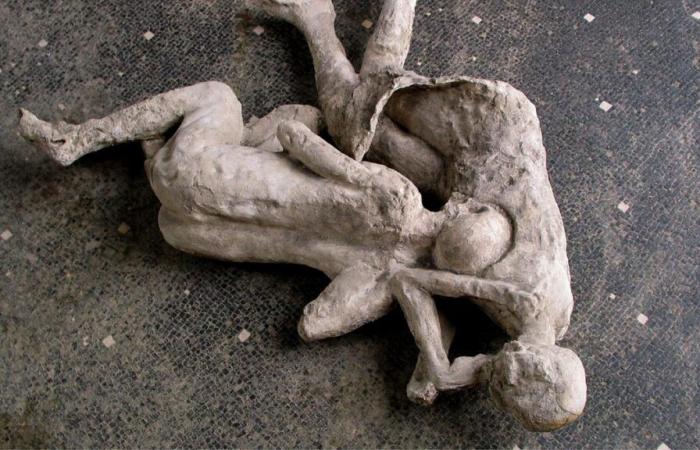DNA analysis reveals that some Pompeii victims were not biologically related, challenging long-held assumptions about their family roles and identities.
ADVERTISEMENT
New DNA analysis suggests archaeologists may have misunderstood the relationships between some victims of the 79 CE eruption of Mount Vesuvius that struck Pompeii almost two millennia ago.
For example, a well-known group of victims, believed to consist of a mother, father and two children, might be far from the truth.
“All four of these people were men, which disproves the theory that they were a father, mother and two children. Additionally, they were not in fact biologically related to each other.” , explains Alissa Mittnik, of the Max Planck Institute for Evolutionary Anthropology, in Germany.
Another famous scene – two characters locked in what has long been considered a motherly embrace – has also been remodeled.
“Again, we found that at least one of the individuals was male. And, again, they did not have a maternal relationship with each other. So, once again, we disproved the most common story that has been told about them,” says Mr. Mittnik.
The team, which also includes scientists from Harvard University and the University of Florence, Italy, relied on genetic material preserved for almost 2,000 years.
After the eruption of Mount Vesuvius destroyed the Roman city in 79 AD, bodies buried in mud and ash eventually decomposed, leaving spaces in their places. In the late 1800s, castings were made from these voids.
The researchers focused on 14 casts being restored, extracting DNA from the fragmented skeletal remains found there. They hoped to determine the sex, ancestry and genetic relationships between the victims.
Researchers also confirmed that the inhabitants of Pompeii were of diverse origins, but thatthey were mainly descended from immigrants from the Eastern Mediterraneanwhich highlights a vast movement of circulation and cultural exchanges in theEmpire romain. Pompeii is located approximately 241 kilometers from Rome.
The study builds on research conducted in 2022, when scientists first sequenced the genome of a Pompeii victim and confirmed the possibility of recoveringancient DNA from the rare human remains that still exist.
“Our DNA-based scientific results shed additional light on previous archaeological and anthropological analyzes and in some ways lead us to rethink the identities of these people, their relationships and their behavior in the final moments of their lives.” , explains Mr. Mittnik.






